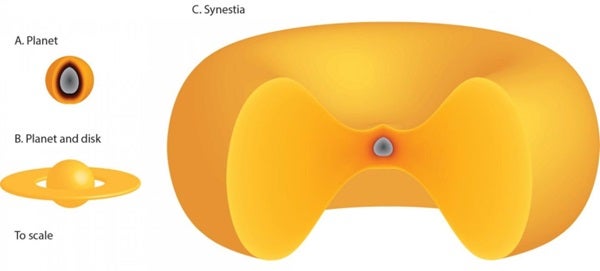Scientists proposed a new type of planetary object they are calling synestia, where a celestial body violently collides with another body, resulting in a donut-shaped disk of vaporized rock. After some time, the body will cool down and turn into the solid, round planets we currently know.
Sarah Stewart, a planetary scientist at the University of California Davis, and Simon Lock, a graduate student at Harvard University in Cambridge, co-authored the study that was published in the Journal of Geophysical Research: Planets.
The name synestia combines the prefix “syn-” meaning “together” and Estia, the Greek goddess of architecture and structures.
The idea was modeled after ice skaters doing a spin — when they put their arms out to the side they slow down but when they tuck their arms in, their momentum stays constant.
The team was interested in how that idea would apply to rapidly spinning planets colliding with each other and how it would impact the angular momentum.
The people doing the study believe the collision that formed Earth likely caused a synestia before it cooled back down and formed into the solid, round object it is today. The researchers said those days probably didn’t last more than 100 years, though.
On top of a theory for planets how planets have formed, the study also lends to the idea of the formation of the Moon since its composition is similar to that of Earth’s.










